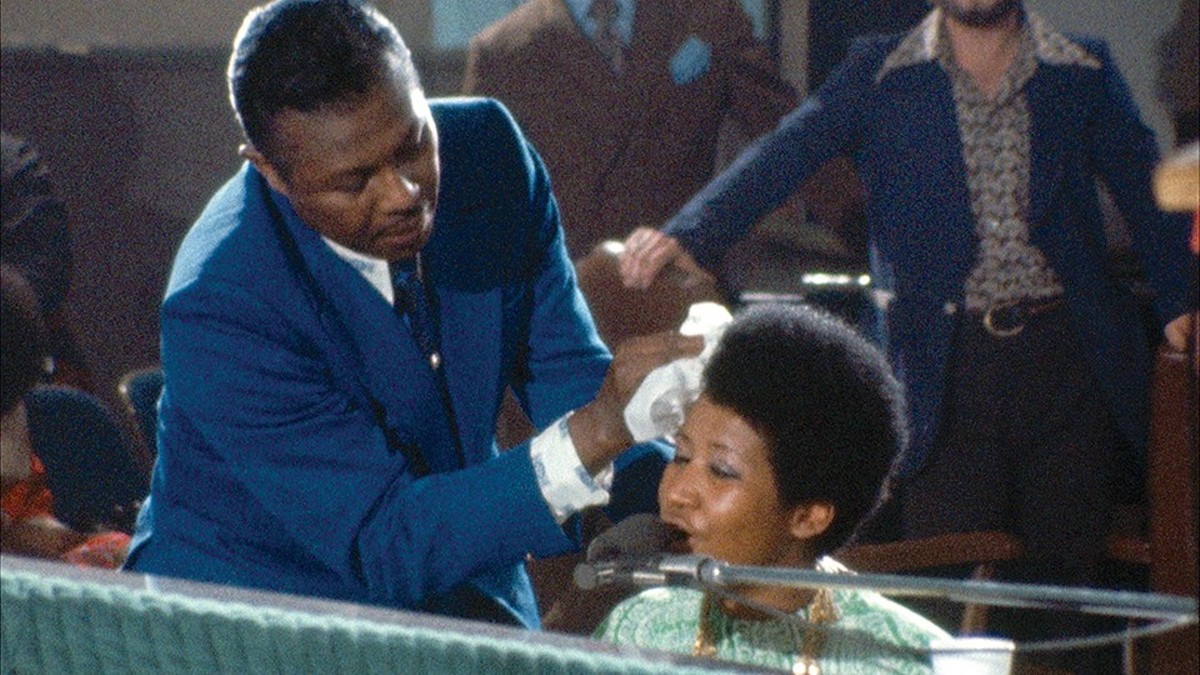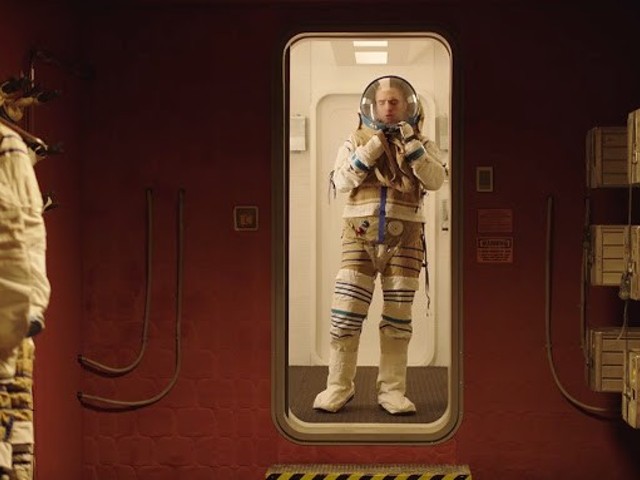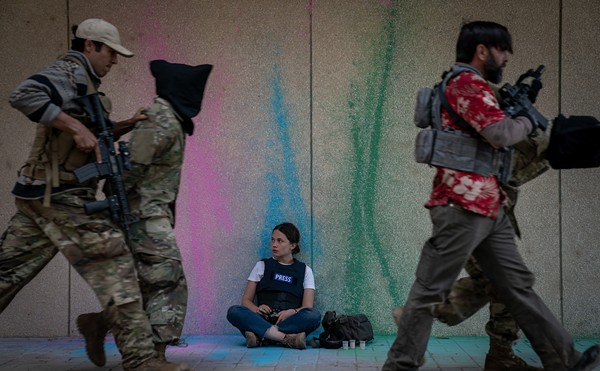In 1972, Aretha Franklin, already one of the greatest R & B performers of all time, decided to return to her roots by recording a live album of gospel favorites not in a concert hall but from the pulpit of a church, backed by the Reverend James Cleveland and a full choir. Recorded on two successive nights in Los Angeles, the performances/services were filmed by Sydney Pollack but left unfinished when the filmmakers were unable to synch the audio recordings to their footage. (To avoid disrupting the performers, they shot without using clapboards.) Nearly 50 years later, the footage has been salvaged and synched, redeemed and recreated, re-emerging as a powerful cinematic time capsule, a no-nonsense record that captures the intensity and energy of a musical performance — or a church service. From the first frame to the very last, Amazing Grace lives up to its title.
The film is loose, spontaneous and unquestionably natural, an uninhibited portrait of one of the great voices of the twentieth century in her natural element, performing the music that lifted her and taught her how to sing. But it's also a fascinating document on another level, a refreshingly raw piece of non-fiction filmmaking that presents the two evenings with little adornment or alteration. Had they completed the film in 1972, I suspect the filmmakers might have gone for a seamless but traditional concert film. There are even a few brief moments of split-screen, a cliché of many '70s performance films.
This belatedly restored version splits the screen in a different way; we witness Aretha and the choir while simultaneously being aware of the very process that allows us to view them. We see the filmmakers wandering around, trying to make sure they're getting the best angles; we're always aware that they are experiencing the performances in real time, with no idea of what will happen next.
And what happens is a simply remarkable display of Franklin's amazing natural talent, truly graceful in every sense. The songs, which range from gospel standards such as "Mary Don't You Weep" to a few carefully selected secular tunes (Marvin Gaye's "Wholly Holy," and a version of "You've Got a Friend" that delicately transforms into "Take My Hand Precious Lord"), rise and expand, spreading through the room. And as Franklin sings, usually accompanying herself on piano, each song flows out like a message she's been holding inside for years, with a kind of loose improvisatory quality that also suggests she's letting her voice run free just to see where it might go.
The filmmakers merely watch in awe, catching the magic. We see Franklin in close-up, her face looks almost like it's under a veil, covered with perspiration but completely glowing. When she performs the title number, the film crew steps back to show her effect on the room, studying the reactions of the choir behind her, completely absorbed in the song and the voice.
The early 1970s saw a flood of concert films and music documentaries. They were heavy on spectacle and egotism and usually reflected more interest in exhibitionism and their stars' hip credentials than the music they almost indifferently recorded. Pollack and his crew may not have known what to expect (or even knew what they had captured) but you can sense that they're moved by it, humbled enough to let the songs and images stand for themselves. It took 45 years to find out what they had achieved, but Amazing Grace stands alone, timeless. On those two nights in 1972, Aretha Franklin earned — and won — respect.






